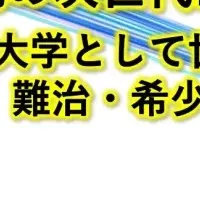
Long-Term Efficacy and Safety of INGREZZA® for Tardive Dyskinesia in Older Adults Analyzed
Long-Term Efficacy and Safety of INGREZZA® for Tardive Dyskinesia in Older Adults
Neurocrine Biosciences, Inc. recently published a post-hoc analysis highlighting the long-lasting effectiveness and overall safety of INGREZZA® (valbenazine) capsules tailored for older adults suffering from tardive dyskinesia (TD). This analysis, published in The Journal of Clinical Psychiatry, arises from two 48-week studies, KINECT® 3 and KINECT® 4, and stands out as the first peer-reviewed work focusing on this patient demographic, particularly those aged 65 and above, who are more susceptible to TD and its consequences.
Understanding Tardive Dyskinesia
Tardive Dyskinesia is a movement disorder that leads to involuntary muscle movements, primarily resulting from long-term use of certain antipsychotic medications. This condition can severely impact the quality of life of the elderly, leading to difficulties with balance, gait, and swallowing, among other complications. In older individuals, the onset of TD can occur relatively quickly, even after just a month of exposure to such medications.
The recent analysis indicates that older participants treated with INGREZZA experienced significant and prolonged reductions in TD symptoms without the emergence of new treatment-related adverse events when compared to younger adults. Dr. Eiry W. Roberts, the Chief Medical Officer of Neurocrine Biosciences, emphasized that this unique insight addresses a significant gap in the existing research, which has often overlooked this vulnerable group.
Study Design and Findings
The pooled result of the post-hoc analysis included data from 304 participants, with 55 individuals (18.1%) aged 65 and older, who received a daily dose of INGREZZA (either 40 mg or 80 mg) over the course of 48 weeks. The efficacy assessment utilized the Abnormal Involuntary Movement Scale (AIMS), indicating notable improvements in TD symptoms among these older adults. In the 48-week observation period, a staggering 95% of patients on the 80 mg dose noted a clinically meaningful change, with significant improvements reported across various measures.
The statistical evaluation yielded no significant discrepancies in safety and efficacy outcomes between older and younger adults, suggesting that INGREZZA was exceptionally well-tolerated across all age groups. The principal adverse effects observed included urinary tract infections and somnolence, affecting a small percentage of the older cohort.
Unique Features of INGREZZA
INGREZZA is celebrated for being the only medication that offers a therapeutic dose from the first day of treatment without needing gradual titration. By selectively targeting the vesicular monoamine transporter 2 (VMAT2), it works by reducing excessive dopamine signaling which is often responsible for the abnormal movements seen in TD. This approach minimizes side effects and simplifies treatment protocols. Moreover, the availability of a sprinkle formulation ensures accessibility for individuals who may have difficulty swallowing pills.
Conclusion
The findings from the KINECT® studies reinforce the role of INGREZZA as a crucial therapeutic option for treating tardive dyskinesia in older adults. As the population ages and instances of TD increase due to prolonged antipsychotic usage, it becomes vital to have effective and safe treatment options. Neurocrine Biosciences continues its commitment to advancing neurological treatment solutions that enhance the quality of life for vulnerable patient groups, such as the elderly.
These new insights on INGREZZA’s safety and efficacy strengthen the existing narrative while also paving the way for future research that could further support its utilization in the management of tardive dyskinesia. With ongoing innovations and a keen focus on under-addressed neurological conditions, Neurocrine remains at the forefront of advancing healthcare solutions for those in need.
Topics Health)










【About Using Articles】
You can freely use the title and article content by linking to the page where the article is posted.
※ Images cannot be used.
【About Links】
Links are free to use.